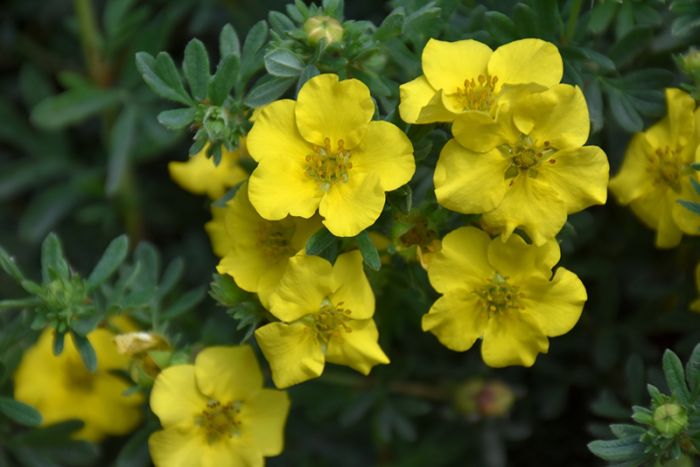Potentilla, Shrubby Cinquefoil 'Cheesehead™'

Out of stock
Sold out for the season- Sun Preference
- Full-Sun
Description
This naturally compact upright mounded shrub produces bright, enthusiastic yellow flowers all season long; fine textured dark green foliage makes a good groundcover; hardy, tough and adaptable to all conditions, but dislikes wet soils
Minnesota's Largest Selection of Shrubs
Elevate your landscaping with Gertens' unmatched variety of shrubs! Selecting the right shrubs for your backyard can enhance its beauty and functionality. Consider factors like sunlight, soil type, and mature size when choosing shrubs. For sunny areas, flowering shrubs like roses or hydrangeas can add color and charm. In shady spots, opt for shrubs like azaleas or hostas. Evergreen shrubs provide year-round interest and privacy, while deciduous shrubs offer seasonal color changes. At Gertens, we offer a wide selection of shrubs to suit every backyard need.
Details
Height: 24 inches
Spread: 24 inches
Sunlight: ![]()
![]()
Hardiness Zone: 2b
Other Names: Bush Cinquefoil, Shrubby Cinquefoil
Brand: Monrovia
Description:
This naturally compact upright mounded shrub produces bright, enthusiastic yellow flowers all season long; fine textured dark green foliage makes a good groundcover; hardy, tough and adaptable to all conditions, but dislikes wet soils
Ornamental Features
Cheesehead™ Potentilla is bathed in stunning yellow flowers with gold eyes at the ends of the branches from late spring to late summer. It has dark green deciduous foliage. The small ferny compound leaves do not develop any appreciable fall color.
Landscape Attributes
Cheesehead™ Potentilla is a dense multi-stemmed deciduous shrub with an upright spreading habit of growth. Its relatively fine texture sets it apart from other landscape plants with less refined foliage.
This is a relatively low maintenance shrub, and is best pruned in late winter once the threat of extreme cold has passed. It is a good choice for attracting butterflies to your yard, but is not particularly attractive to deer who tend to leave it alone in favor of tastier treats. It has no significant negative characteristics.
Cheesehead™ Potentilla is recommended for the following landscape applications;
- Mass Planting
- General Garden Use
- Groundcover
- Container Planting
Planting & Growing
Cheesehead™ Potentilla will grow to be about 24 inches tall at maturity, with a spread of 24 inches. It tends to fill out right to the ground and therefore doesn't necessarily require facer plants in front. It grows at a slow rate, and under ideal conditions can be expected to live for approximately 30 years.
This shrub does best in full sun to partial shade. It is very adaptable to both dry and moist locations, and should do just fine under typical garden conditions. It is considered to be drought-tolerant, and thus makes an ideal choice for a low-water garden or xeriscape application. It is not particular as to soil type or pH, and is able to handle environmental salt. It is highly tolerant of urban pollution and will even thrive in inner city environments. This is a selection of a native North American species.
Cheesehead™ Potentilla makes a fine choice for the outdoor landscape, but it is also well-suited for use in outdoor pots and containers. With its upright habit of growth, it is best suited for use as a 'thriller' in the 'spiller-thriller-filler' container combination; plant it near the center of the pot, surrounded by smaller plants and those that spill over the edges. It is even sizeable enough that it can be grown alone in a suitable container. Note that when grown in a container, it may not perform exactly as indicated on the tag - this is to be expected. Also note that when growing plants in outdoor containers and baskets, they may require more frequent waterings than they would in the yard or garden. Be aware that in our climate, most plants cannot be expected to survive the winter if left in containers outdoors, and this plant is no exception. Contact our experts for more information on how to protect it over the winter months.
| SKU | Container Size |
| S1957 | #2 Container (2 Gallon) |
* Not all container sizes may be available at this time. See store for details on specific container size availability.
More Information
| Available for Pre-Order | No |
|---|---|
| Sun Preference | Full-Sun |
| USDA Hardiness Zone | 3, 4, 5, 6, 7, 8 |
| Common Family Name | Cinquefoil |


